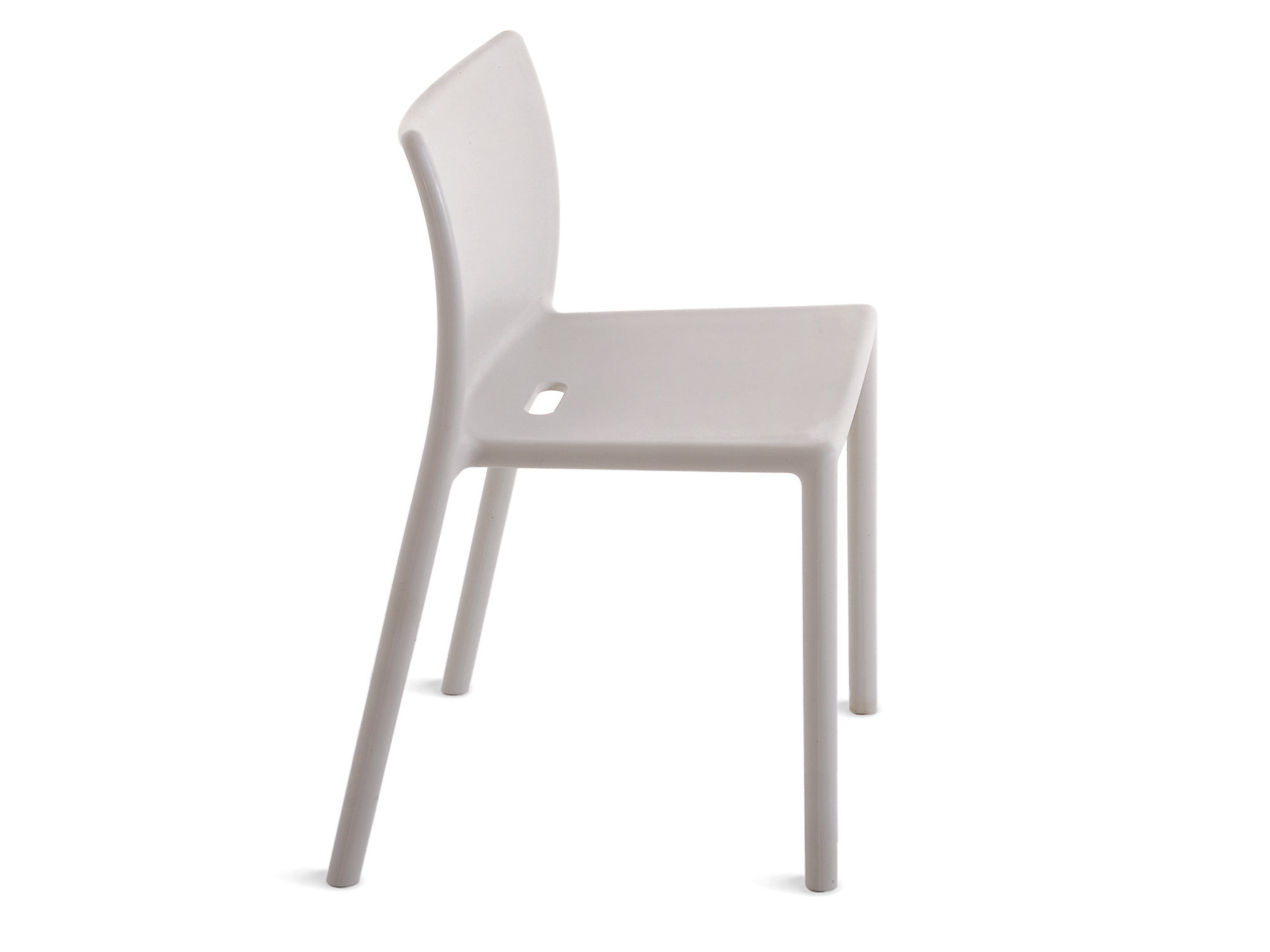Air Chair was born out of a simple length of plastic moulded tube given to me by Perazza as a sample of a new plastic moulding technology called gas injection, which he suggested we use to make a new chair. The design began from the leg up, describing the tubular structure of a chair to which a thin skin is applied for the seat and back, in much the same way as the earlier Plywood Chair uses a thicker plywood for the structure and a thinner plywood panel for the seat. With each chair designed one gets a better sense of what makes a comfortable seat, and with this one I think we succeeded in delivering a combination of angles and curves which combine to give a high level of comfort to the long term occupant. At the time the office still worked mainly with 2-dimensional drawing software, which ensures that first prototypes are a complete surprise and usually need many adjustments before the proportions look right. For once this was not the case and we went from the first prototypes to the final model with very few changes. The technical development was considerably more complicated than the design development, and involved a great effort by Luca Scoti, who engineered the mould.
By means of air pressure, gas injection allows the moulding of volumes and forms which were previously unmouldable. A simple analogy would be to imagine blowing up a balloon inside a shoebox. In the case of gas injection moulding, where there is extra volume in the mould, the plastic is pressed against the mould leaving a hollow core. This allows tubular structural elements to be moulded together with thin surface skins (seat and back panels). The chair, which was modelled before it existed as a 3-dimensional drawing, had to be digitally measured to provide an accurate computer drawing of the 3-d form. Then began a lengthy process of computer controlled modelling, followed by hand modelling to establish a form which could be moulded in a two-part mould without any complex moving parts.
Extracted from Everything but the Walls by Jasper Morrison (Lars Müller Publishers, 2006)
